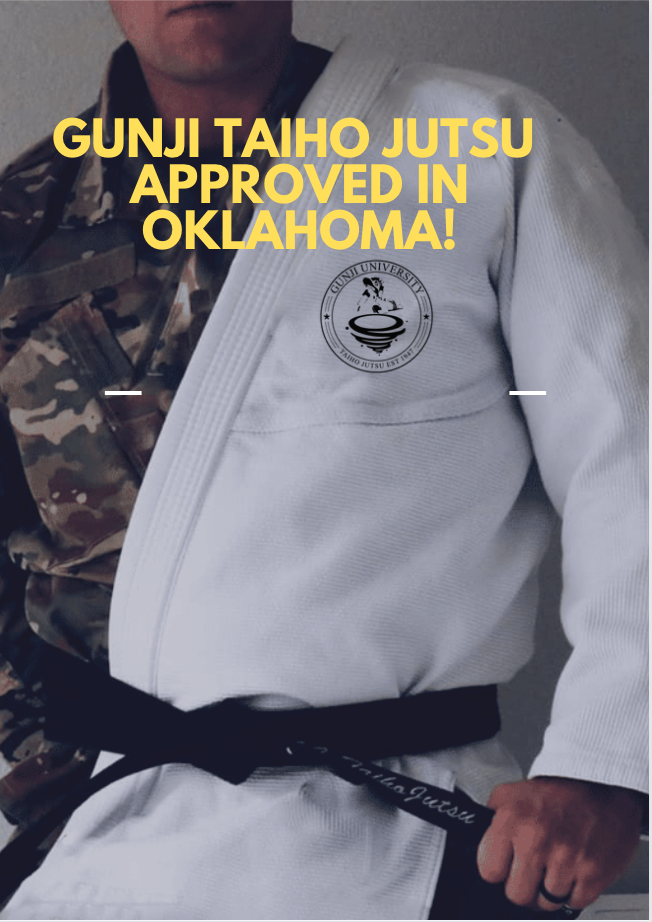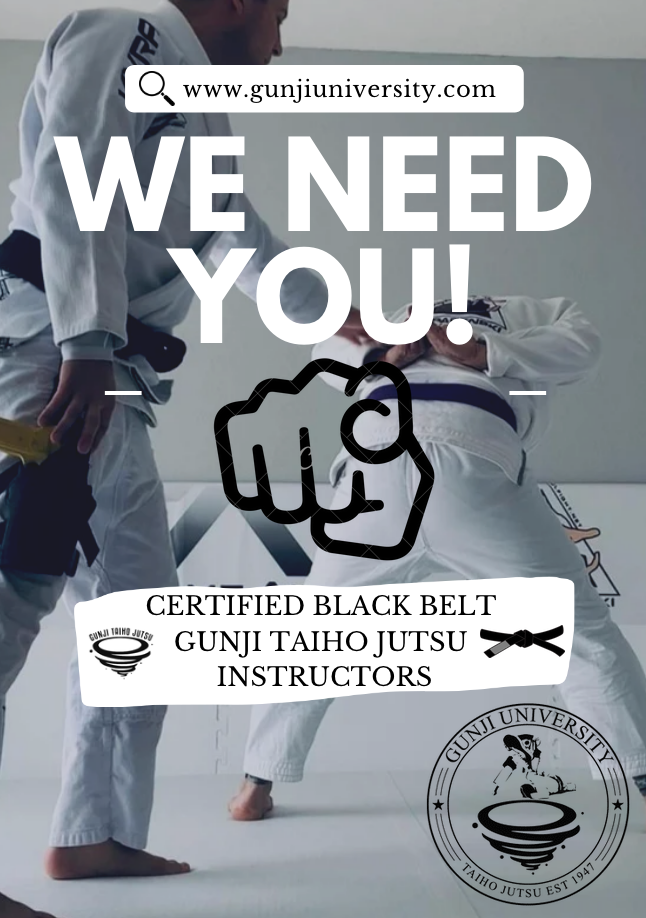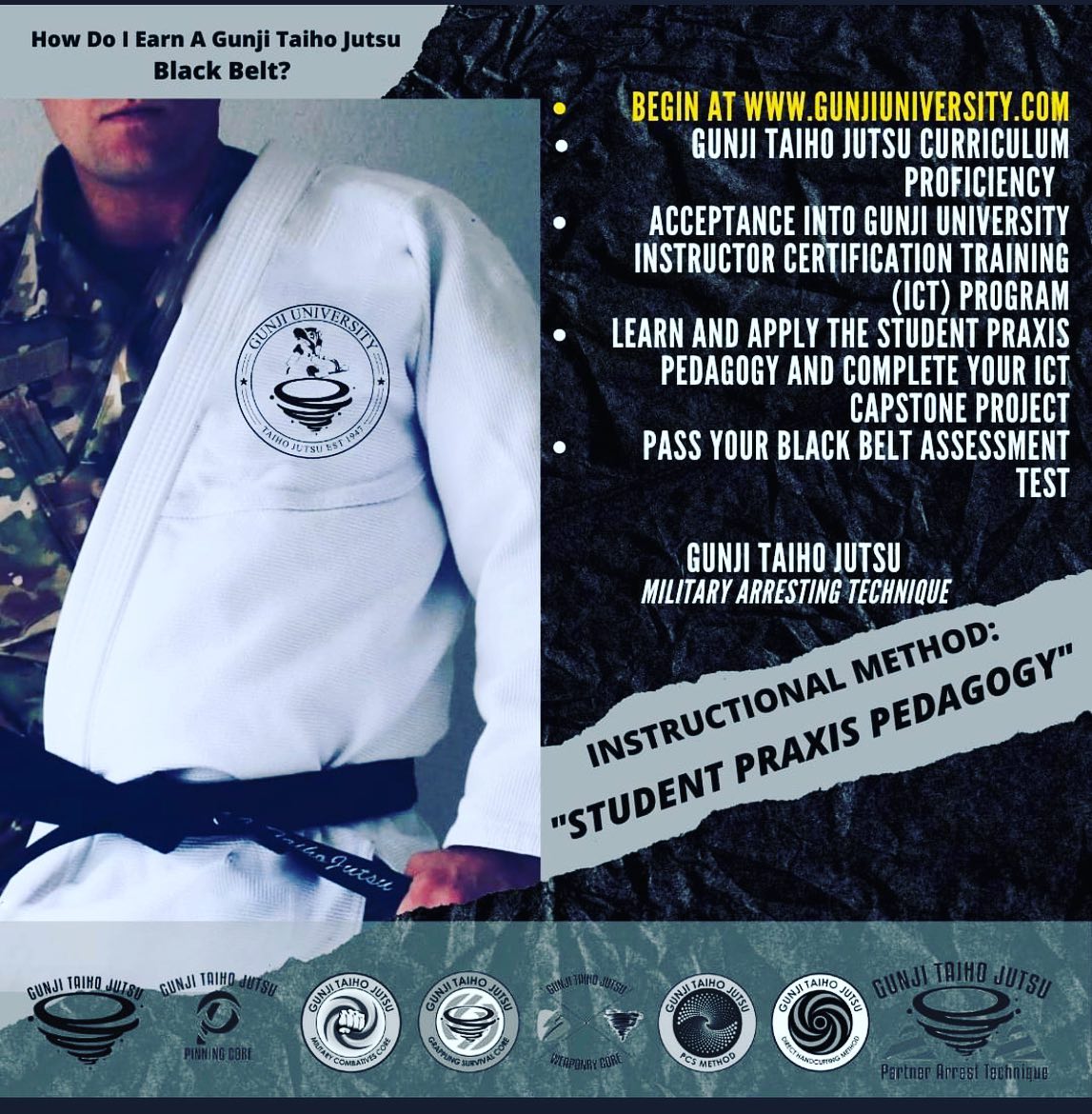The Discoveries of Taizan Ryu Taiho Jutsu and the Systems of Soke Joseph Miller

In typical fashion, just when you believe paths will not cross, I finally met Soke Joseph Miller (Retired Air Force) last week. I had been trying to find Soke Miller for some two years now in Japan, and on that day introduced myself and physically took the food basket out of his hands so we could shake hands. We could discuss Martial Arts, Budo, and Taiho Jutsu (arresting technique). Specifically, we got into Hakko Ryu Jujutsu, Yoshitsune Jujutsu, and Taizan Ryu Taiho Jutsu.
After departing, I got invited to the Taizan Ryu Dojo in Japan. At the time of this writing, I am now reflecting on the first of many more training sessions I received last night; before exploring the content of last night's training, it is crucial to understand who Soke Joseph Miller is and his experience with Soke Ryuho Okuyama, founder of the Hakko Ryu Jujutsu. There is a connection between Soke Okuyama, Soke Miller, and Gunji Taiho Jutsu.
Last night Soke Miller gave me the platform to let the students and i...
The Official Katas of Gunji Taiho Jutsu
Gunji Taiho Jutsu has two formal Katas at the time of this writing. The motivation to create forms 1. Ichi-No-Kata (To Position Oneself) and 2. Kaiten-Katame-No-Kata ( To Grapple With Rotation) have come to design through my Kata training at the Kodokan in Tokyo. Each month the Judo tatamis on the top floor of the Kodokan allow students to practice many of the official katas of Judo under the instruction and watchful eyes of the senseis. I have been able to pick up the necessary details and improve my practice of Nage-No-Kata and Katame-No-Kata by participating in these training sessions. At the same time, I have observed practitioners and senseis practicing Kime-No-Kata, Kodokan Goshin Jitsu, Ju-No-Kata, and additional katas of Judo, gaining incredible insights into Japanese culture, budo etiquette, and protocols.

These official katas at the Kodokan have assisted the art of Judo spread worldwide and had a stable base of knowledge for over 100 years. For this reason, I want...
ANNOUNCEMENT: Gunji Taiho Jutsu Approved In Oklahoma
Gunji University wants to congratulate Michael James Rosenquist of Gorilla Judo And BJJ Club- Ricardo Calavanti Oklahoma for successfully getting Gunji Taiho Jutsu approved by the Certifying Agency of Law Enforcement in Oklahoma (CLEET) for continued education hours. What this means in more first-responders will be able to earn training hours for completing Gunji Taiho Jutsu training by GTJ certified instructors. Please read Michael's Facebook post below:
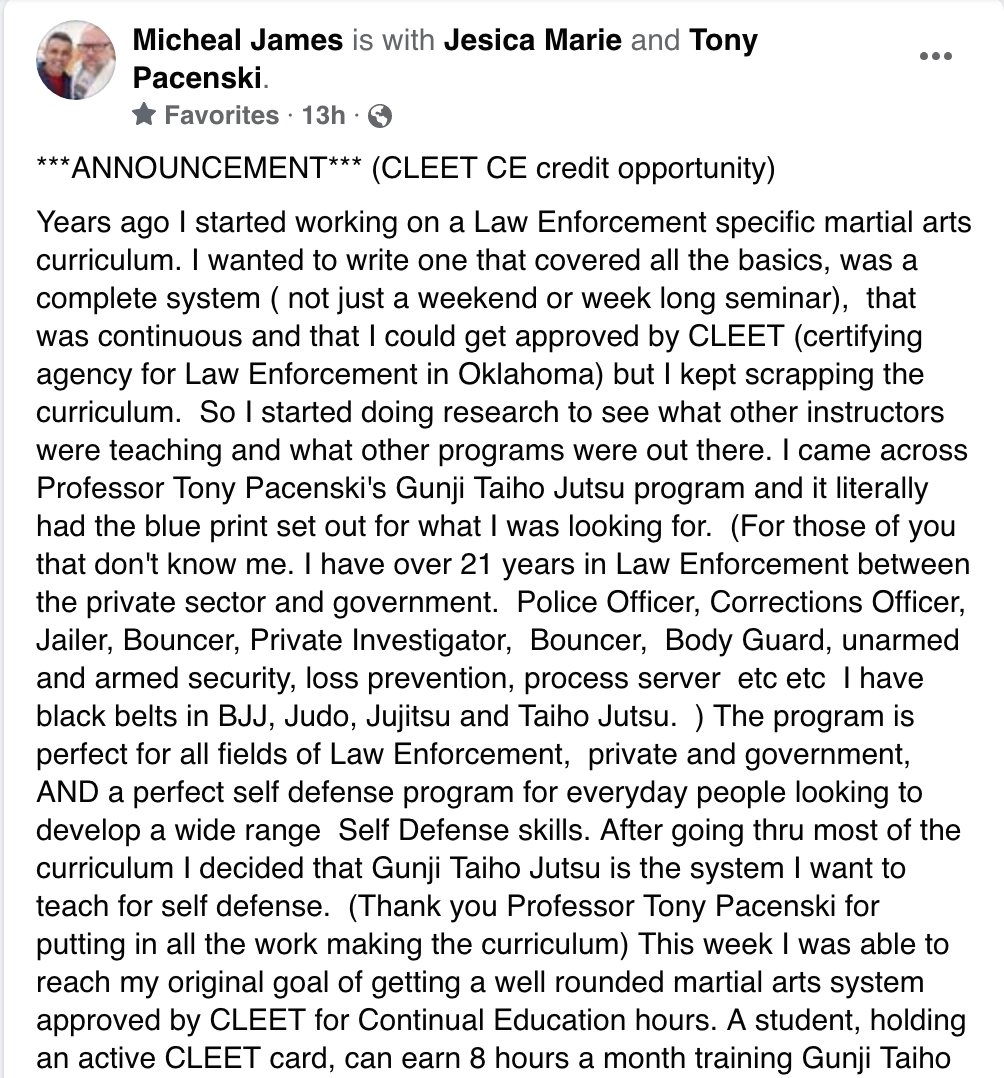
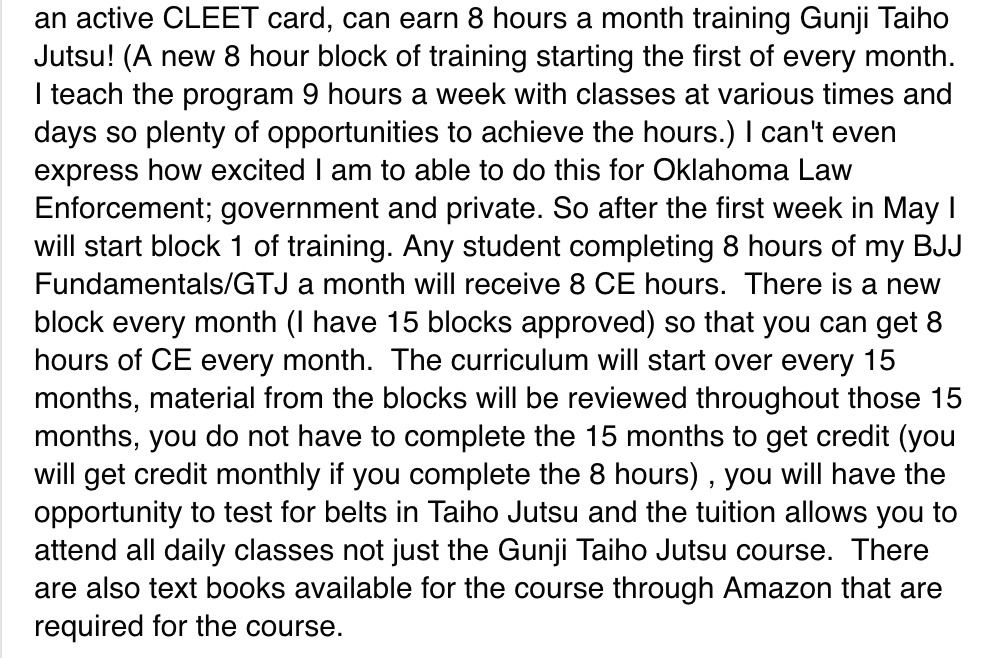
Again, much applause and congratulations to Micheal's effort! There is good work to be done.
Next, this puts a higher demand for GTJ Certified Instructors!
‘Teachers have three loves: love of learning, love of learners, and the love of bringing the first two loves together.’–Scott Hayden
To The Reader
The author will be most happy to receive your comments, including criticisms and suggestions. Noteworthy comments may be included in future editions or books on this series.
Citations for Educational Purpose:
Mi...
Teaching with the Heart of a Teacher and Not of a Salesman
The art of teaching is unique. As much as a person can say it is a science and a method, it is not. Teaching is an art, and from the beginning to the end a teacher has to have heart. He or she needs to be able to have the teacher's heart; not a salesman's heart. People will see through a salesman's pitch to buy; however, a teacher's heart comes through different to a person wanting to learn how to do something better or desiring to reach a long-term goal.
People come to you when you are the teacher from different starting points. From my point of view if I can help someone, I am will do it and I want the lesson to be powerful. Something he or she will remember even if they never do it again. In the context of Martial Arts, Combatives or Taiho Jutsu, if the person learns something that I can share, I want the person to walk away knowing "that stuff works." The person becomes the marketing and the salesman of a great teacher whose heart is in the right place...for the student.
Video ...
The Finer Points of the Police Armbar 1 (Ikkyo/ikkjo)

In Gunji Taiho Jutsu (GJT), before a student is ever taught a technique to bring a person to the ground to finalize an arrest strategy, he or she must learn GTJ PCS strategies 1 and 2. With PCS 1 there is an ability to approach a suspect to observe the proximity, gain compliance and see how the suspect is standing. PCS 2 looks at the officer's positioning, control, and system of takedown against the suspect. These two guiding principles of GTJ give the officer the opportunity to transition next to GJT PCS 3: Pinning, Communication, and Safety for all. Altogether this form of taiho jutsu instruction is much better and useful to the student instead of learning a bunch of isolated techniques or "police holds" such as the armbar.
In many police academies and law enforcement training blocks, trainees are taught from the side position standing to use the armbar. This is a straight armlock of control that can be used effectively to bring a suspect to the ground. For GTJ, again, the straight ...
Turning Uke's Hand | Kote Gaeshi's Spiral Leverage

For almost a year living in Japan, I have been studying how to off-balance my training partners that I am throwing (Uke's). Off-balance or breaking a person's balance is called Kuzushi. I have been training Karate, Judo and Aikido while all this time catching some great moments in my learning curve on this topic. This has assisted in my research of evolving taiho jutsu arresting technique and specifically something of value to add to the Gunji Taiho Jutsu system.
One of the key positioning points or objectives to reach in Gunji Taiho Jutsu is the outside position (outside line). This is the point just next to your training partner or someone that you wish to bring to the ground to arrest. From the outside line, it to easy to gain the back position which is even better in terms of superior positioning to protect yourself from a bigger and stronger person. In former blogs, I have discussed the universal arm control with two hands-on holding a person's one arm. This universal arm control...
Kote Gaeshi | Structure, Balance and Usefulness
 One of the popular techniques of Jujutsu and specifically Aikido is Kote Gaeshi. This is a wrist-turning technique that can bring an attacker to the ground or even throw him in the air. Kote Gaeshi is not a high percentage move applied in the dojo under high-level sparring. A wristlock control and throw is a small area to control, so many students when thinking of a takedown or throw control other bigger parts of the body instead of the wrist. It makes sense in a weaponless environment; however, if your training partner puts something in his hand to attack; how quickly you will find yourself rushing to control the wrist. I give you Kote Gaeshi.
One of the popular techniques of Jujutsu and specifically Aikido is Kote Gaeshi. This is a wrist-turning technique that can bring an attacker to the ground or even throw him in the air. Kote Gaeshi is not a high percentage move applied in the dojo under high-level sparring. A wristlock control and throw is a small area to control, so many students when thinking of a takedown or throw control other bigger parts of the body instead of the wrist. It makes sense in a weaponless environment; however, if your training partner puts something in his hand to attack; how quickly you will find yourself rushing to control the wrist. I give you Kote Gaeshi.
This past weekend Yasuo Kobayashi, Aikido 8th dan taught three techniques from a straight punch (Tsuki). Two of the technique transitioned into Kote Gaeshi and finally two different ways to turn the attacker to his stomach and finally two types of pinning techniques. What was nice about practicing this technique was the different experiences...
Prone Position Assailant Reaches For Waistband
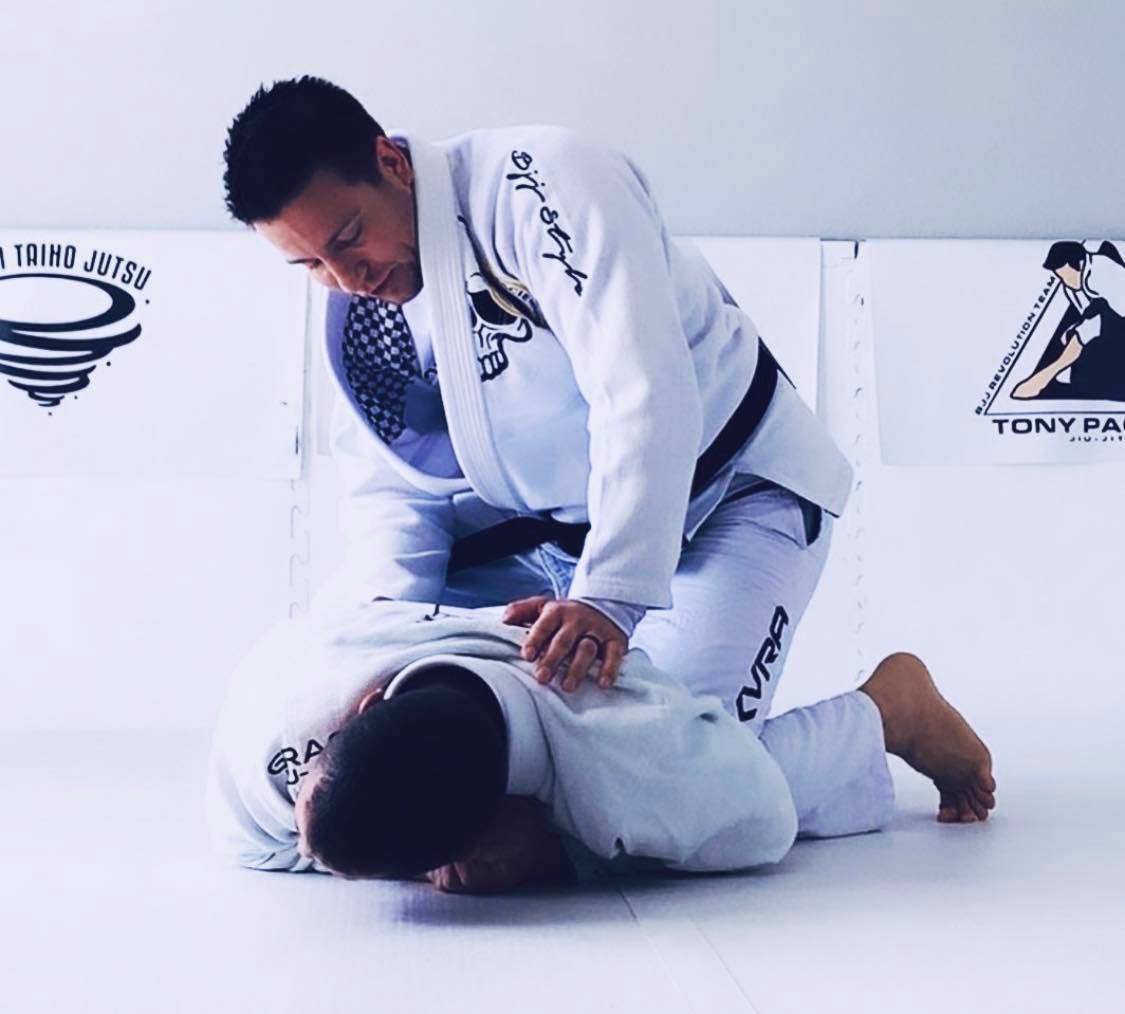
One of the most challenging positions in arresting technique is the prone position. The elbows should be attacked on both sides; not one! Read that again if you are advocating to attack the near sidearm of the assailant. Even better try testing this attack of the close/near sidearm. Here is what happens.
From the prone position when the assailant protects his arms, it is better to open up both sides of his elbows than attacking the near sidearm. In Gunji Taiho Jutsu, we do not endorse attacking only the near sidearm. When this strategy is used under stress, the assailant will come to his knees and stand up. It is even easier when you, as the officer or security forces, change your position and use the knee ride with your back rear knee to transition that knee into the near sidearm of the assailant. You give up a lot of positional dominance away that often you cannot get back. Frankly, do so is dangerous.
To The Reader
The author will be most happy to receive your comments, inc...
Iaido Is A Path Towards Taking Initiative
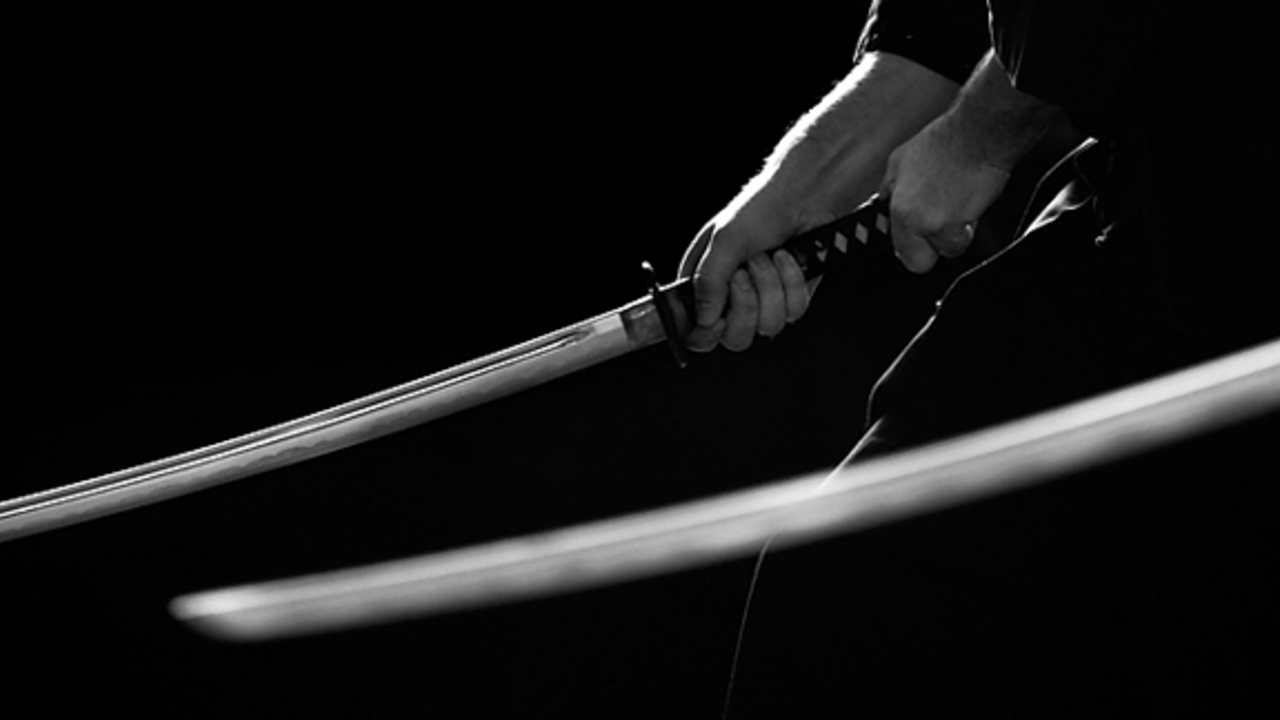
In the last Gunji University blog, I wrote about the understanding of the zero-concept relating to Judo grip fighting and also the Japanese Martial Arts ideas of when to attack: Go No Sen (After the attack); Sen No Sen (Attack the attack); and Sen Sen No Sen (Taking initiative). Having lived in Tokyo for more than 9 months I am only starting to understand Budo. This study for me has always been picked up and down to know more about Bushido culture while training in Martial Art all these years; however, today I see many issues relating to Bushido origins and its historical context during Japan's modernization Meiji period. I have concerns with people today throwing words like Budo and Bushido around in the United States when they have such a focus on Sport and Mixed Martial Arts culture. As I study, I am only beginning to understand Budo here in Japan, and in a positive way I have been enjoying training in Judo, Karatedo, Aikido and now Jodo (Jojutsu/Short Staff). I would like to p...
The Budo Way - Attacking Late, Same Time and Taking Initiative (SEN SEN NO SEN)

At this time in my Military career, I am in the position of being key personnel to Commanders. One of the things I enjoy is having little golden moments of mentorship and learning how these officers approach leadership. I always write little pearls of wisdom shared or ideas of principles that are universal. Each commander that I have been able to work with has gotten to know a little about my Martial Arts background. I always think of the question, "If I only had 10 minutes to teach a Commander Martial Arts because he or she asked me to show a move, what would it be?" Keep in mind, we would not have nice training mats to do ground techniques, yet there is a great chance that the request would be in the Military uniform. So, in the many times this played out in my mind and the few actual opportunities I had to do his with Officers and Chiefs, I taught the Concept of Zero using Judo Grip Fighting called Kumi Kata.
Right now you are thinking, "What does math have to do with Jiu Jitsu/...

